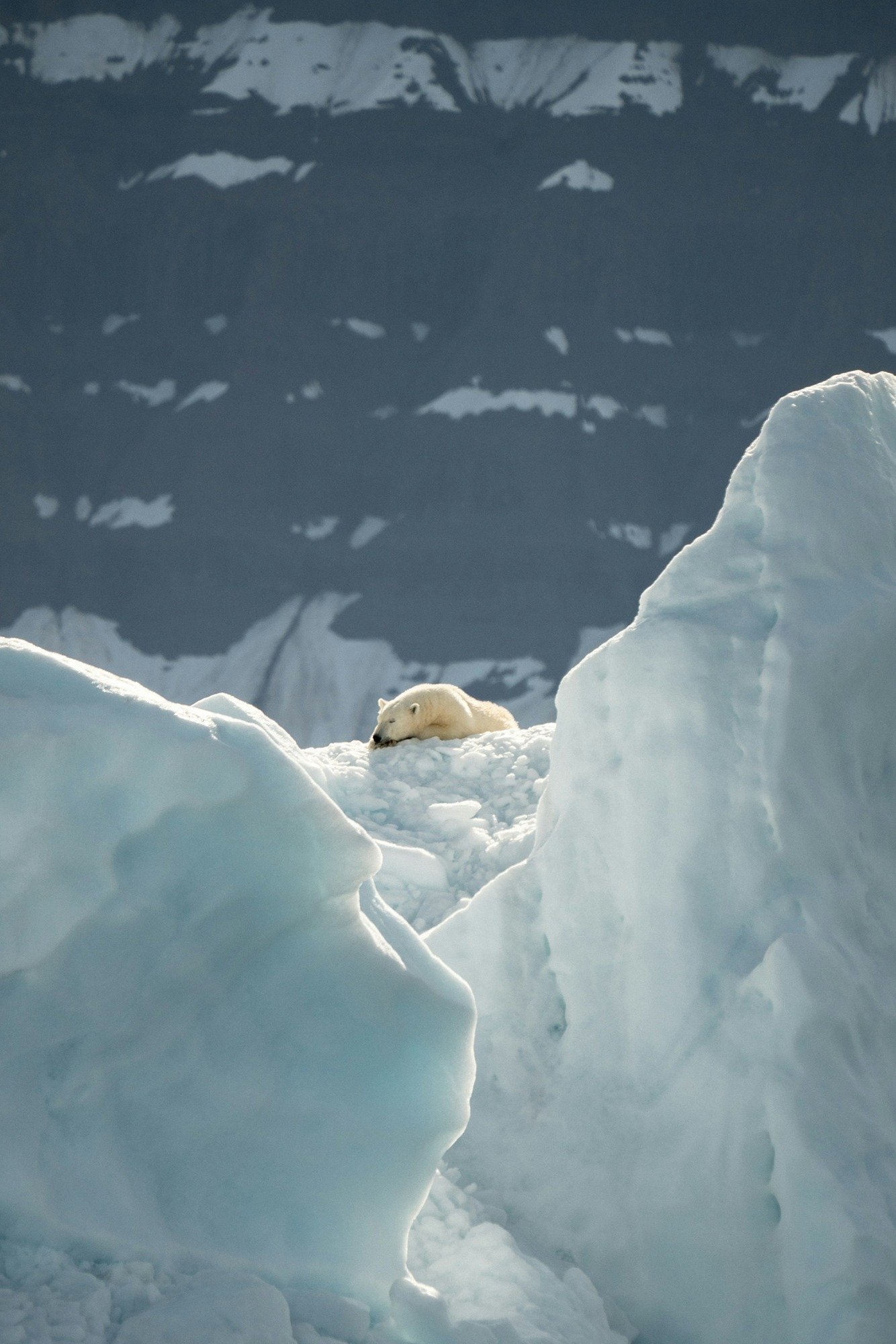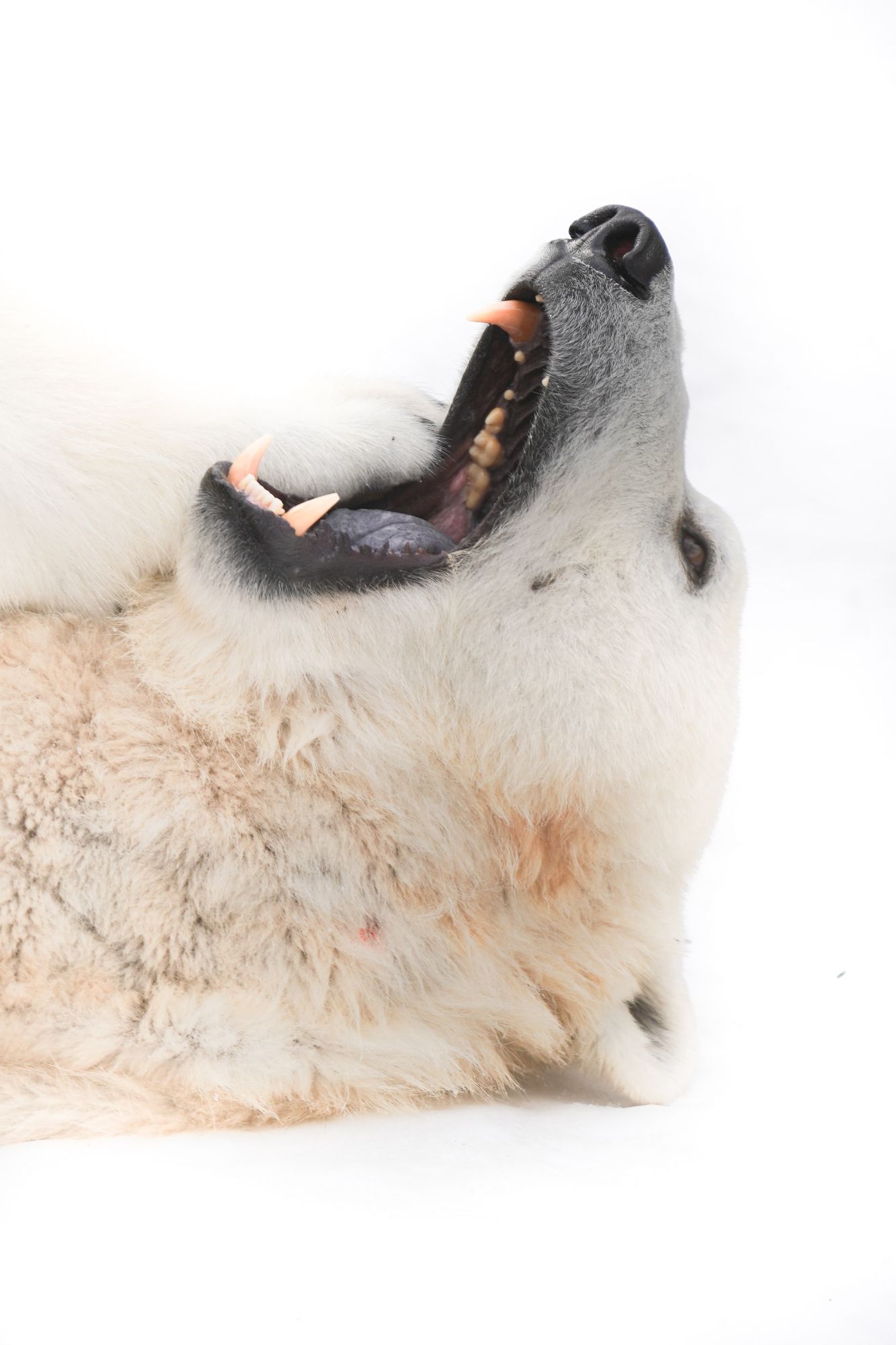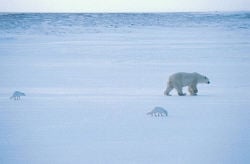Polar Bears need you! They are top of the food chain in the Arctic and we need to protect sea ice -polar bears and many other species need it to survive and thrive.
"Despite longer ice-free seasons, polar bears still occupy much of their original range, at least for now — a rare and hopeful truth in conservation".
This above quote is from Polar Bears International (18 November 2025) in an email. The thing is, we need to make sure Polar Bears International have what they need to ensure that polar bears have a future in the Arctic and that things improve for polar bears, rather than getting worse.

Polar Bears International say that this year, they've been able to...
Pinpoint critical denning areas to enable mothers and cubs to be undisturbed;
Support northern communities with practical coexistence tools to keep both people and bears safer; find out about Building a Bigger, Better Bear Safety Toolbox
During Polar Bears Week (2nd to 8th November), nearly 500 kind donors raised over $182,000 to help reduce conflict between polar bears & people.
Over 66.7 million people heard about Polar Bears Week on social media! That's quite a reach! Find out more.
NEWS
November 2025: Why are polar bear pregnancy rates declining in Western Hudson Bay? Find out here
October 2025: Polar bears have taken over an abandoned Soviet research station and made themselves at home. Watch the video here, on the Independent's You Tube Channel. If you're planning a filming a polar bear with a drone, please read these guidelines first from Polar Bears International.
October 2025: Don't miss Polar Bears International's fall season of Tundra Connections webcasts and live chats! They kick off on the 21st October and they are free! Find out more here.
September 2025: Are polar bears affected by wildfires? Find out here.
August 2025: New Research Shows Greater Stress on Western Hudson Bay Polar Bears - find out more here.
More Polar bear news...
October 2025: Polar bears have taken over a an abandoned Soviet research station and made themselves at home. Watch the video here, on the Independent's You Tube Channel.
If you're planning a filming a polar bear with a drone, please read these guidelines first from Polar Bears International.
October 2025: Don't miss Polar Bears International's fall season of Tundra Connections webcasts and live chats! They kick off on the 21st October and they are free! Find out more here.
September 2025: Are polar bears affected by wildfires? Find out here.
August 2025: New Research Shows Greater Stress on Western Hudson Bay Polar Bears - find out more here.

Looking to the future
The key to saving sea ice for polar bears and getting the climate back to functioning the way it should is to get away from using fossil fuels for energy all together.
Polar Bears International.
The science is clear: oil and gas development in [the Arctic National Wildlife Refuge) would pose an unacceptable risk to an already threatened polar bear population. Find out more
Polar Bears International
To help, Polar Bears International say that we can all act...
Involve yourself in projects in your communities to replace fossil fuels with clean energy. What are your local and regional renewable energy options?
Let's make constructions more energy efficient. What can you do at home, at work, in schools, in life?
Support projects aimed at reducing the number of vehicles and the options available to us all to use public transport.
WWF says that shipping increased 37 per cent and the distance traveled doubled in the Arctic between 2013 and 2023. Find out what impact this has on polar bears here.
11 ways to help Polar Bears
What’s Really Happening To Polar Bears During The Climate Crisis? IFLscience.com teams up with Polar Bears International to find out (6th July 2023)
Polar bears...
Why are polar bears important and how to save polar bears from global warming
Listen to this TED Talk! Alysa McCall, Director of Conservation Outreach and Staff Scientist with Polar Bears International, took part in a TED@Destination Canada event. Alysa’s talk focused on human-polar bear co-existence which is an increasingly important part of PBI’s work.
A new study predicts a troubling future for the polar bears of Hudson Bay. Scientists predict the localised extinction of polar bears there if the Paris Climate Agreement is breached. A team of biologists and climate scientists re-evaluated the future of the sea ice, polar bears and seals of Hudson Bay. Find out more here.
Bring polar bears into your heart and mind. One way to do this is to adopt one - I adopted a polar bear and just thinking of her got me taking action to reduce, reuse, recycle etc. I turned the heat down to help her. You can watch polar bears on webcams, take part in awareness weeks, and learn about the area of the world they live in to get an idea what it's like. Why not pick a polar bear to track? Find out how to connect with polar bears here.
Even now - despite all the talk and television - many people just don't register what the threats are to the Arctic and how important it is for all our sakes to preserve it and all life there. Polar Bears International have three great tips for talking to people about the challenges facing polar bears – just share your concerns. Focus on what draws you together and connect those things together. Find out more
4. Be aware of the challenges facing polar bears.
Discover all about polar bears and the conservation challenges they face - there are more than we think. Pollution, disease, human-polar bear conflict, commercial activity (e.g. drilling for oil and gas), conflict with people all impact on polar bears and other life. Polar Bears International and Arctic WWF have more information so please pay them a visit. The loss of sea ice is the biggest threat to polar bears. This video shows the extent of sea ice loss in the Arctic over the last 25 years.
5. Who else lives in the Arctic? Discover more about them
Sea ice in the Arctic isn’t just about polar bears – other animals are affected as well who need sea ice to survive and thrive such as beluga whales and Arctic seals, Bowhead whales, walrus, reindeer and caribou, and the narwhal. Local people depend on the sea ice for transport. Find out more with Arctic WWF.
Polar Bears International is the only charity totally dedicated to wild polar bear conservation. They know polar bears--their habits, their ecology, their threats--and are recognized leaders in their conservation. Made up of a small group of passionate conservationists, scientists, and volunteers, PBI exists to help secure a future for polar bears across the Arctic. Spread the word, especially about how people can get involved and help.
7. Be a part of the solution!
There are plenty of things we can all do to help. Promote clean transport, support an energy change - even just to talk about it will help raise awareness. Look at your own lifestyle to see what you can change - you can work out your carbon footprint and set yourself mini-goals or dramatic ones to be the change you want to see in the world.
A reduced global temperature will lead to a decrease in the speed at which the Arctic ice is melting, so it's important to reduce fossil fuels as much as we can. Looking after the natural world on the planet will help the health of the planet all over the world. Trees, rainforest, seagrass, peatlands, wetlands and other habitats all keep the planet healthy and they matter.
8. Put pressure on politicians
Polar bears have no voice, so we all need to stand up for them and put pressure on those decision makers who could make a difference at all levels of government and also on businesses to encourage them to make the right decisions for nature, wildlife and all of us.
Things you can do to help polar bears
- Think before you buy - do you really need what you're about to purchase?
- Reduce your use of fossil fuels wherever you can
- Recycle, reuse, reduce wherever you can
- Check your carbon footprint - what is it now?
- Develop a plan to reduce it as much as possible
- Support charities in their efforts to raise awareness and to fight for polar bears.
- Be a voice for polar bears. Every bear matters.

Introduce your charges to the joys of nature in the Arctic and the challenges facing polar bears and other wildlife. Polar Bears International have all you need. This is your chance to make a difference and inspire children to be the conservationists of tomorrow, whether as a career choice or as a volunteer or as a guardian or steward of the planet
Adopt a polar bear! Adoptions start at $25 with Polar Bears International, and you can do an eco-adoption. I’ve adopted a polar bear before and kept thinking about “my” bear and how I could help look after her. Adopt a polar bear today. (Image pictured right is copyright Polar Bears International.) You could also send an e-card. Or why not become a Polar Bear Patron with a monthly donation?
11. Eat less meat and animal products
Viva is a vegan charity and they produced this video explaining how our eating choices impact on animals such as the polar bear. Take a look. You can visit Viva's website here.





